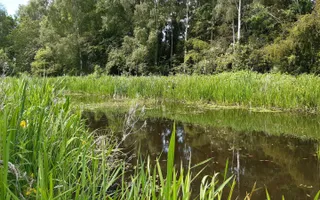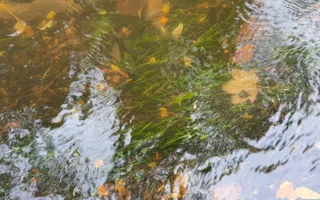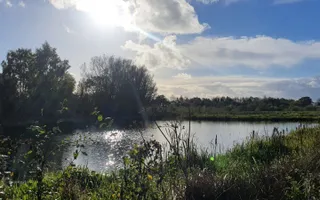Read this page in Welsh / Darllenwch y dudalen hon yn Gymraeg
Nature Reserves
Central to everything the project delivery team do, is the Conservation Management Strategy.
This states that positive nature conservation measures are required to fully compensate for any adverse changes brought about by restoring the Montgomery to a working canal.

The Welsh section of the canal is a Special Area of Conservation (SAC) for floating water plantain (Luronium natans) and a Site of Special Scientific Interest (SSSI) for the emergent fringe, invertebrate assemblage and nationally important species such as Grass-wrack pondweed (Potamogeton compressus).
We need to achieve a balance, whereby we restore the channel to navigation standards, but we enhance the habitat for the rare aquatic plant species and the overall habitat assemblage.

The LUF project combines works to restore the channel to a condition that these rare species can thrive in, however, there is a potential for new areas of wetland habitat to be created. Owing to the SAC designation of the canal, our plans are subject to the Habitat Regulations Assessment (HRA) process. We are doing in depth research to outline what 'good' looks like for the canal habitat, what it is that the important species need, and how we fit our plans in with this.
We will be determining whether it is possible to fully mitigate any potential impacts associated with the plan on the SAC, or whether there is a need to create additional habitat alongside the canal to increase the resilience of the species so that 'good' can be achieved. As additional habitat may be needed, we are acting sensibly by thinking now about the feasibility of creating these off-site reserves should they be required.
If created, these habitats would have a hydrological link to the canal, constructed to a similar depth of around 1.5 metres, but they would be graded to produce varied water depths which would help provide a variety of ecological niches. An area of deeper water in the middle would also prevent the emergent fringe from encroaching and dominating.

Along with creating three offline nature reserves, another part of the teams' work will be to develop a robust management plan for the future to ensure the reserves, and the canal itself, are positively managed so that any natural and human-made pressures are anticipated and mitigated.
If the outcomes of the research guided by the HRA indicate that mitigation measures are not enough to maintain the ecology, these reserves would act as a valuable habitat for a variety of species including the protected water plants, which can be translocated from the canal and into the reserves.
The vision is for a canal that functions for ecology, social and economic benefit. We are working to create plans to try and strike this balance, using mitigation measures wherever possible to prevent or reduce a negative impact.
Last Edited: 31 May 2024


Stay connected
Sign up to our newsletter and discover how we protect canals and help nature thrive

